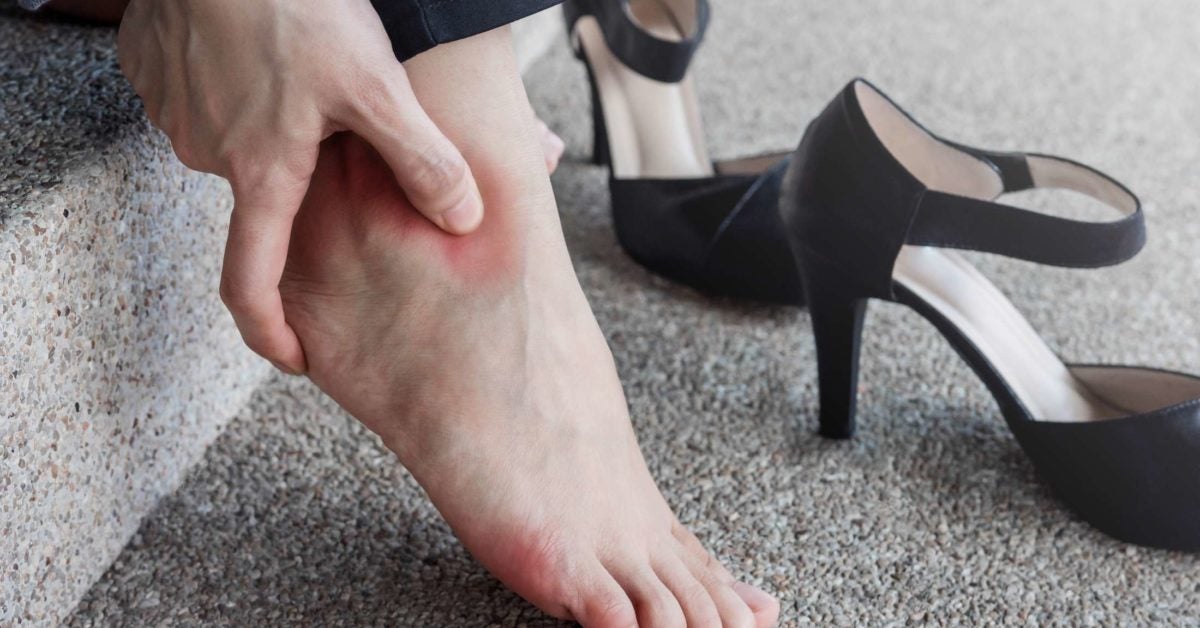One of the most common causes of foot pain in the arch is plantar fasciitis. It involves inflammation of a dense band of tissue passing along your foot’s bottom and linking your heel bone to your toes. Plantar fasciitis generally causes sharp pain, usually starting in the morning during the first moves. The pain decreases typically as you get up and move, but it could return after prolonged periods of standing or when you stand up immediately after sitting. In runners, plantar fasciitis is more common. There is also an increased risk of plantar fasciitis in overweight people and others who wear shoes with insufficient support.

Symptoms
Plantar fasciitis usually causes sharp pain at the heel at the base of the foot. The discomfort is typically the worst after waking for the first few moves, but it can also be caused by prolonged standing stretches or when you get up after sitting. Typically the pain gets worse during exercising, not before exercising.
Treatments
Most people with plantar fasciitis recover with traditional treatment, including rest, icing the painful area and stretching, within several months.
Medications
Pain killers such as ibuprofen (Advil, Motrin IB, others) and naproxen sodium ( Aleve) can reduce the discomfort and inflammation caused by plantar fasciitis.
Therapy
Symptoms can be relieved by stretching and strengthening exercises or by using special equipment. They include:
Physiotherapy
A physical trainer will teach you a series of exercises to stretch the plantar fascia and Achilles’ tendon and reinforce the lower legs’ muscles. A doctor may also advise you to add athletic taping to protect the base of the foot.
Night splints
A physiotherapist or doctor may prescribe that you wear a splint that stretches a calf and your foot arch while you’re sleeping.
Orthotics
Your doctor can recommend arch supports (orthotics) that are off-the-shelf or custom-fit to help disperse pressure to your feet more evenly.
Surgical and other treatments
If, after several months, more restrictive interventions aren’t effective, your doctor may recommend:
Injections
Temporary pain relief may be offered by injecting a steroid medication into the tender region. Multiple shots aren’t recommended because they may weaken the plantar fascia and can cause it to crack. Platelet-rich plasma derived from the patient’s blood can be administered using ultrasonic imaging to facilitate tissue healing.
Extracorporeal wave shock therapy
In this technique, sound waves are aimed to induce healing in the region of heel pain. Generally, it is used for chronic plantar fasciitis, not leading to more conventional therapies. Few experiments show positive outcomes, but they have not seen reliably successful results.
Ultrasonic tissue repair
Doctors partially developed this minimally invasive technique at the Mayo Clinic. It uses ultrasonic imaging to direct a needle-like probe through the weakened tissue of the plantar fascia. The probing tip vibrates vigorously using ultrasonic energy to break up the infected tissue, then suctioned.
Surgery
Few people undergo surgery to detach the heel bone from the plantar fascia. Generally, it’s just a choice when the pain is severe, and most therapies fail. That may be achieved by an open operation or a minor incision with local anesthesia.











